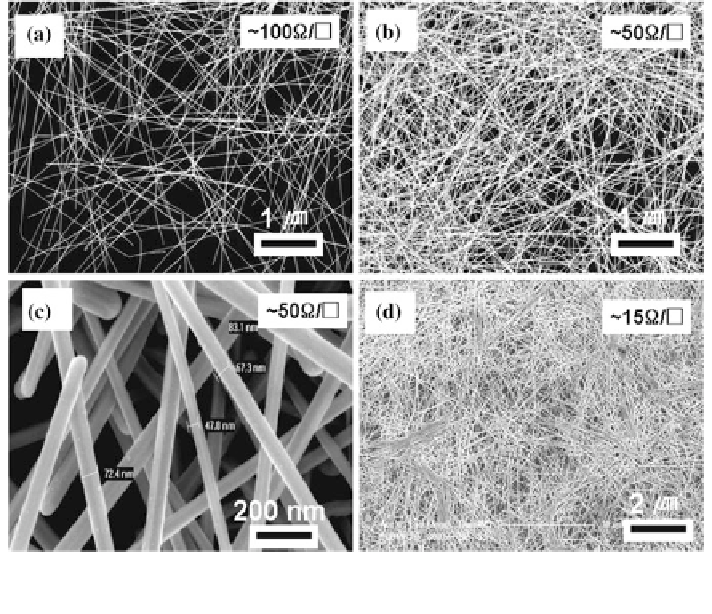Civil Engineering Reference
In-Depth Information
must be assured that the durability is sufficient. The latter requirement may
necessitate gold-containing films (Lansåker et al.
2009
).
Carbon-based transparent conductors have attracted much interest recently.
Meshes of carbon nanotubes can give high values of T
lum
and T
sol
jointly with
good electrical conductivity (Hu et al.
2010a
; Niu
2011
). An alternative to the
nanotubes is graphene, which is subject to intense research and development
efforts today (2013); it comprises atomically thin layers of carbon atoms forming a
honeycomb lattice (Geim and Novoselov
2007
; Eda and Chhowalla
2010
).
Graphene layers can be made by mechanical or chemical exfoliation of graphite
into individual sheets and also by chemical vapor deposition; roll-to-roll prepa-
ration of graphene layers has been documented recently by Bae et al. (
2010
,
2012
).
Meshes based on metal nanowires are another possibility, and silver nanowires
with diameters below 0.1 lm and lengths exceeding 10 lm can be made in large
quantities through cheap reduction of silver nitrate (Hu et al.
2010b
,
2011
), and
suspensions can be used for the deposition of highly stretchable thin films (Xu and
Zhu
2012
). Such nanowires are shown in Fig.
11
. The coatings can have excellent
electrical properties but suffer from some haze, which limits their applications for
electrochromic glazings. Printable microgrids are an alternative option (Yu et al.
2012
).
Fig. 11 Electron micrographs of chemically prepared Ag nanowires at different densities and
magnifications, and having the shown resistance per square. From Hu et al. (
2010b
)

